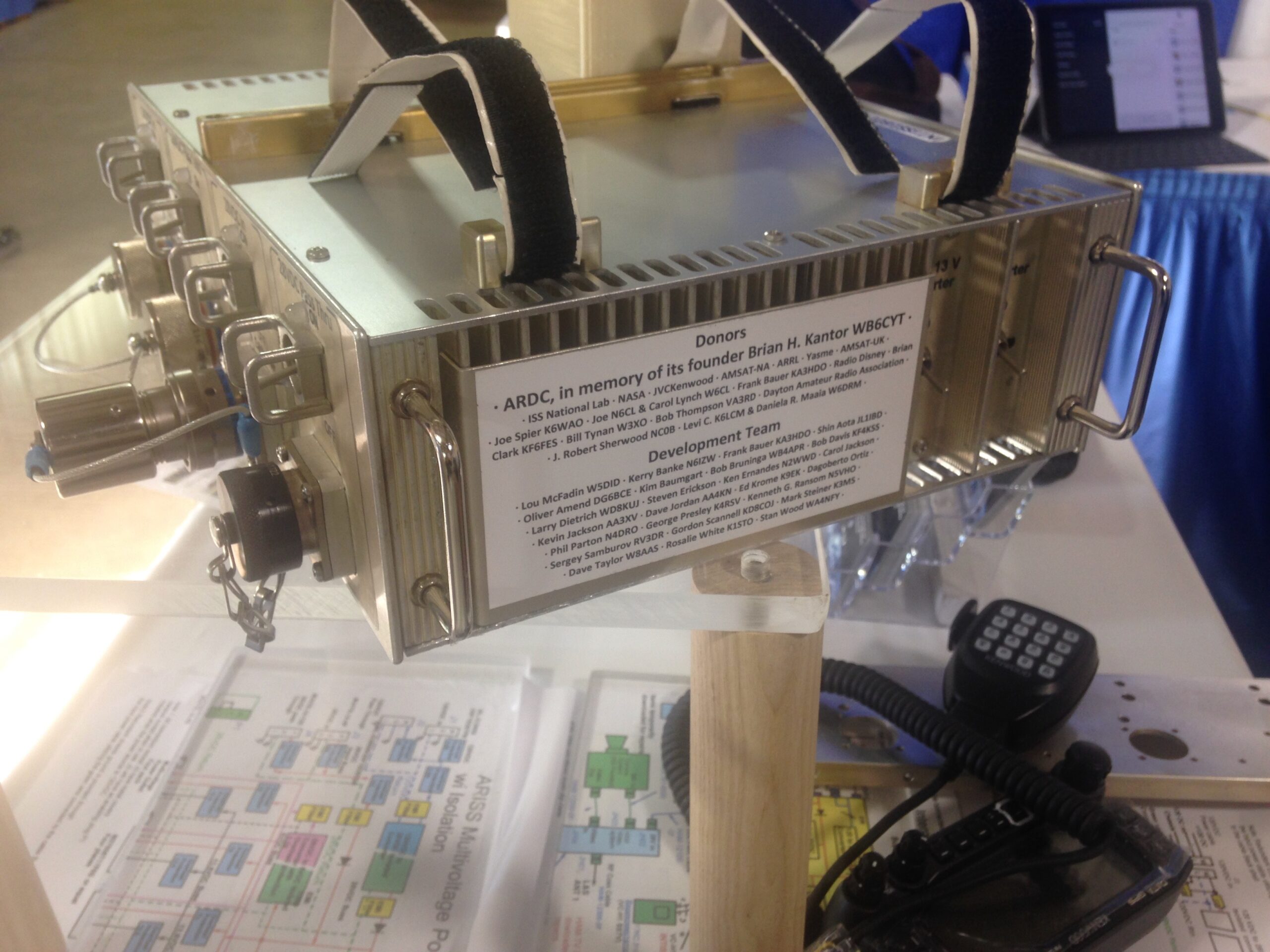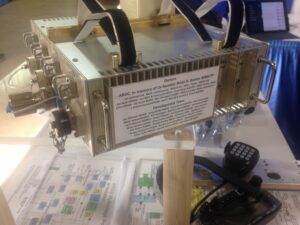Grant: ARISS Next Generation Radio
Amateur radio has been in space almost since the beginning of the “space age”. Sputnik 1 went up in 1957; Oscar-1 (Orbiting Satellite Carrying Amateur Radio) was launched in 1961. With the launch of STS-9 (the ninth Space Shuttle mission) in November 1983, ham radio went into space with astronauts for the first time. In his (limited) spare time, Dr. Owen Garriott, W5LFL, used a modified 2-meter Motorola FM hand-held radio to contact hams all over the world. Ham radio has been a part of human spaceflight ever since, including on the International Space Station (ISS). Many astronauts and cosmonauts have gotten their ham licenses just so they can use it while in space.
Ham radio on the ISS operates in several modes. Because the crew is so busy, it is usually in an automated packet (digital) mode. When a member of the crew has the time, he/she can pick up the microphone and talk to whoever happens to be listening on the ground below.
But the most interesting (to us) uses of ham radio on the ISS are prearranged two-way voice contacts with groups of K-12 school students. Although the school or group has to apply months in advance and the local hams supporting them must do a lot of planning and practice, to the kids they are anything but mundane. As the ISS comes over the horizon, the astronauts’ voices come through the speaker, and a few lucky kids nervously ask their questions, one look at their faces reminds us of the sense of magic and awe that (some of us, at least) fondly remember from our own childhoods during the Mercury, Gemini and Apollo programs. There aren’t many things that excite today’s kids as much as they excited us, but space flight seems to be one of them. And ARISS has made ham radio a central part of that.
So when the ARISS project put out a call for donations to support the development of new amateur equipment to be launched to the ISS, ARDC agreed to help. The primary item was the development of a custom DC-DC power supply to produce the 13.8V required by small amateur radio transceivers from the 120V DC and 28V DC available on the ISS. One might think a power supply is a simple, low-tech piece of equipment, but the performance, reliability and especially safety requirements that must be met by everything that goes into space with humans are anything but simple or low-tech. This tends to cost a lot of time and money, and ARDC was happy to help.
This photo is of the engineering model of the ARISS power supply. An identical flight unit, with the same placard commemorating the donors who made it possible, was launched on March 6, 2020 on the CRS-20 mission by a Falcon-9 rocket, for rendezvous with the International Space Station a few days later. Brian’s name went up with it. –Phil Karn, KA9Q

